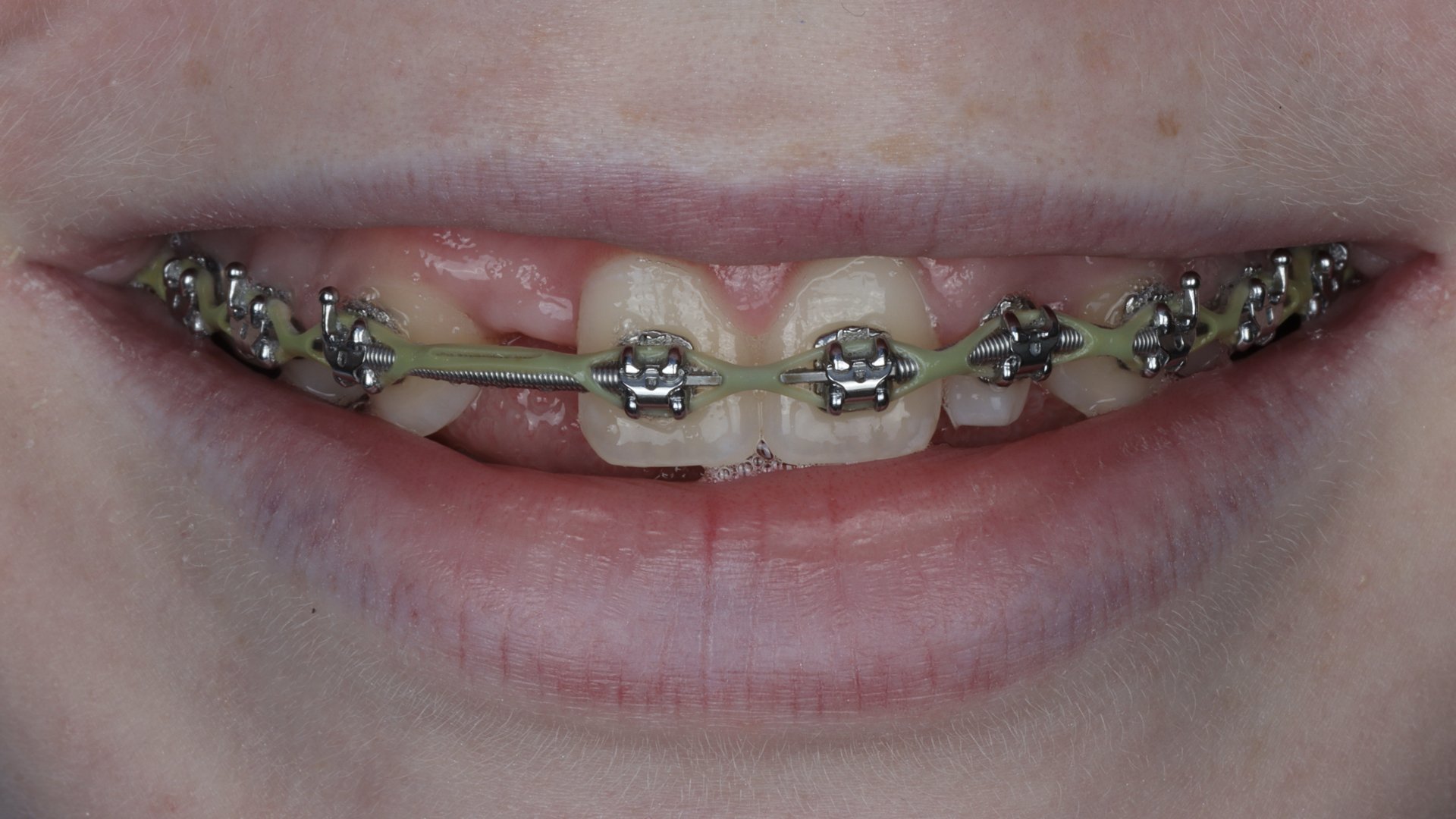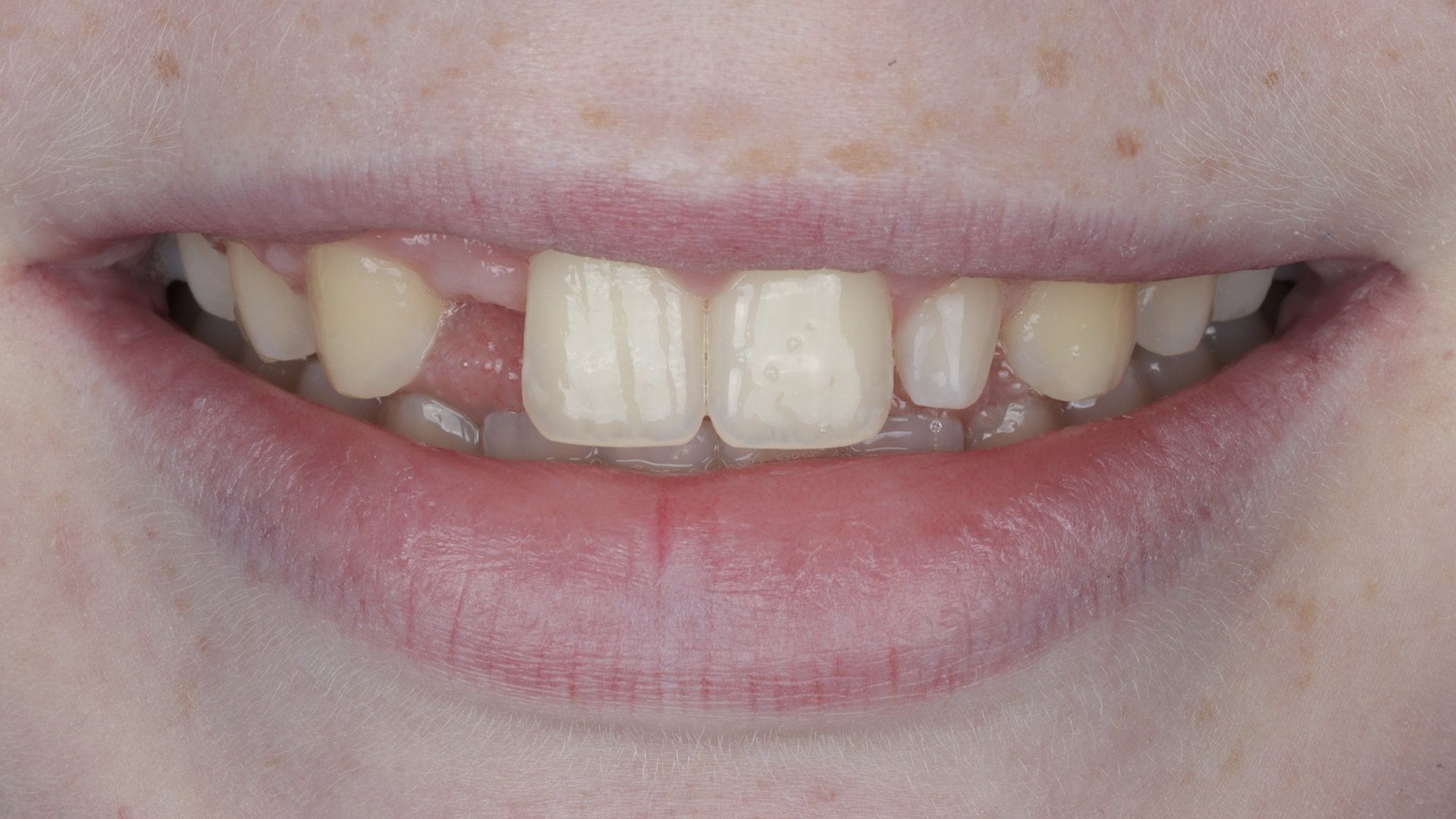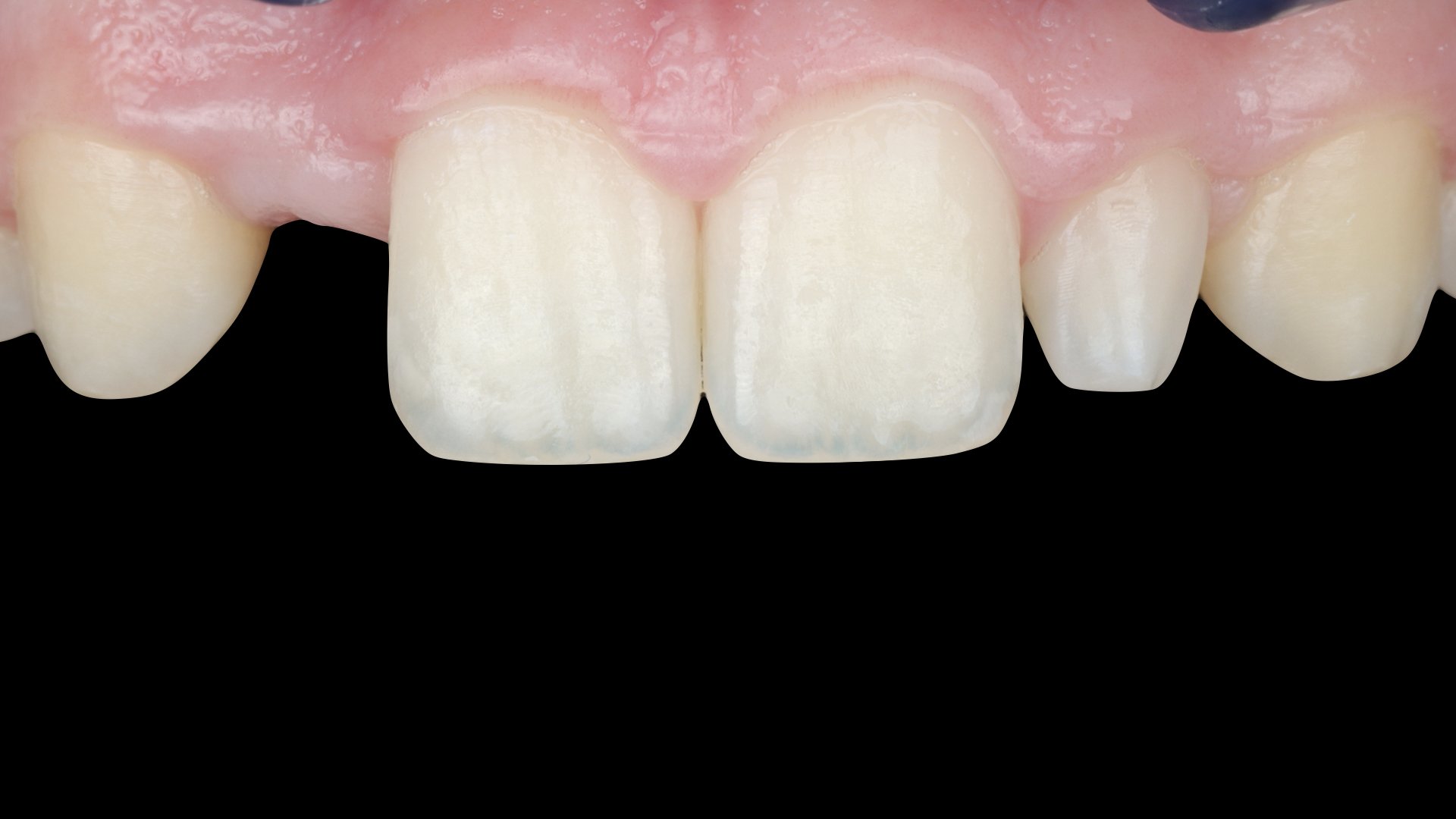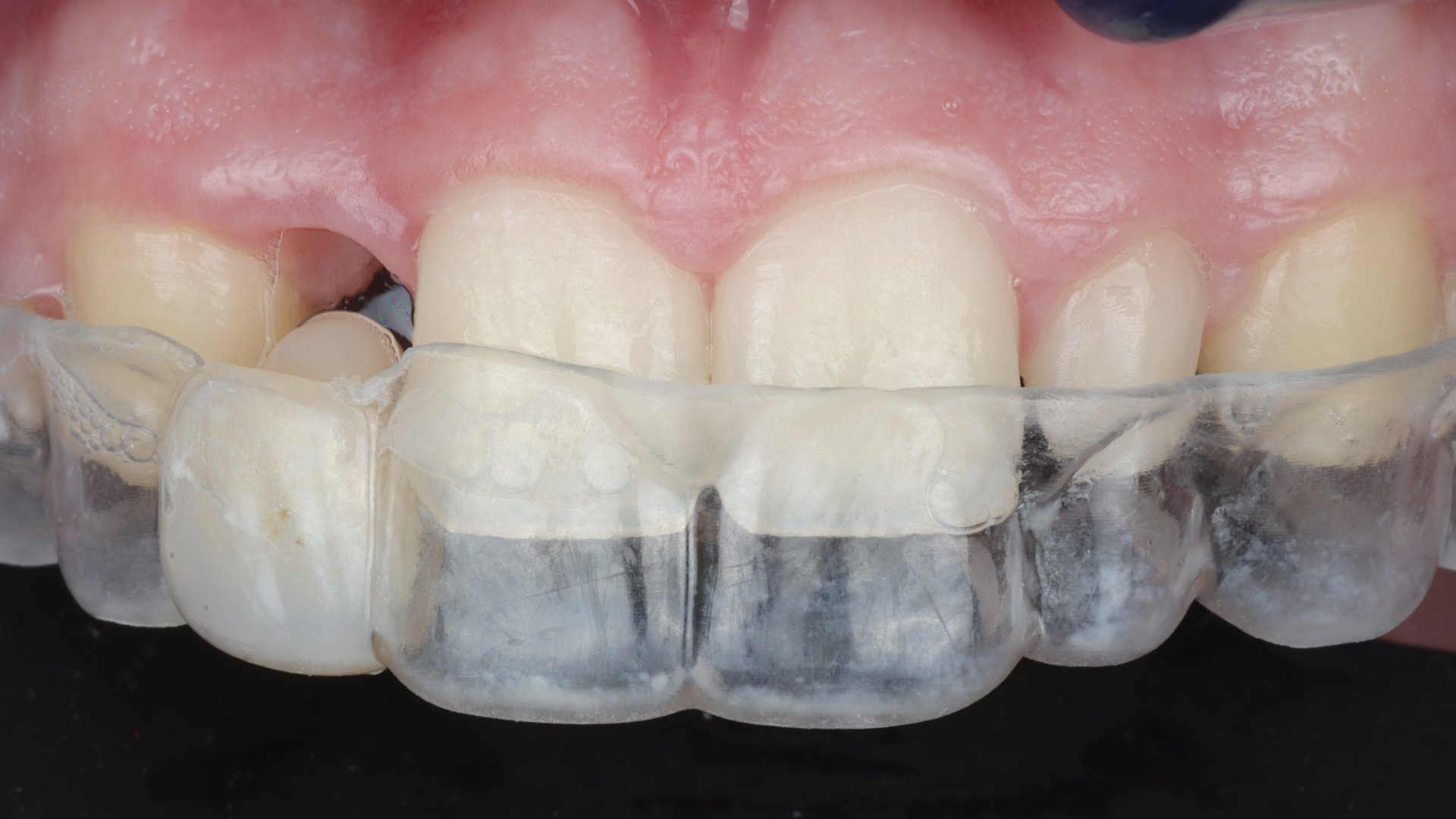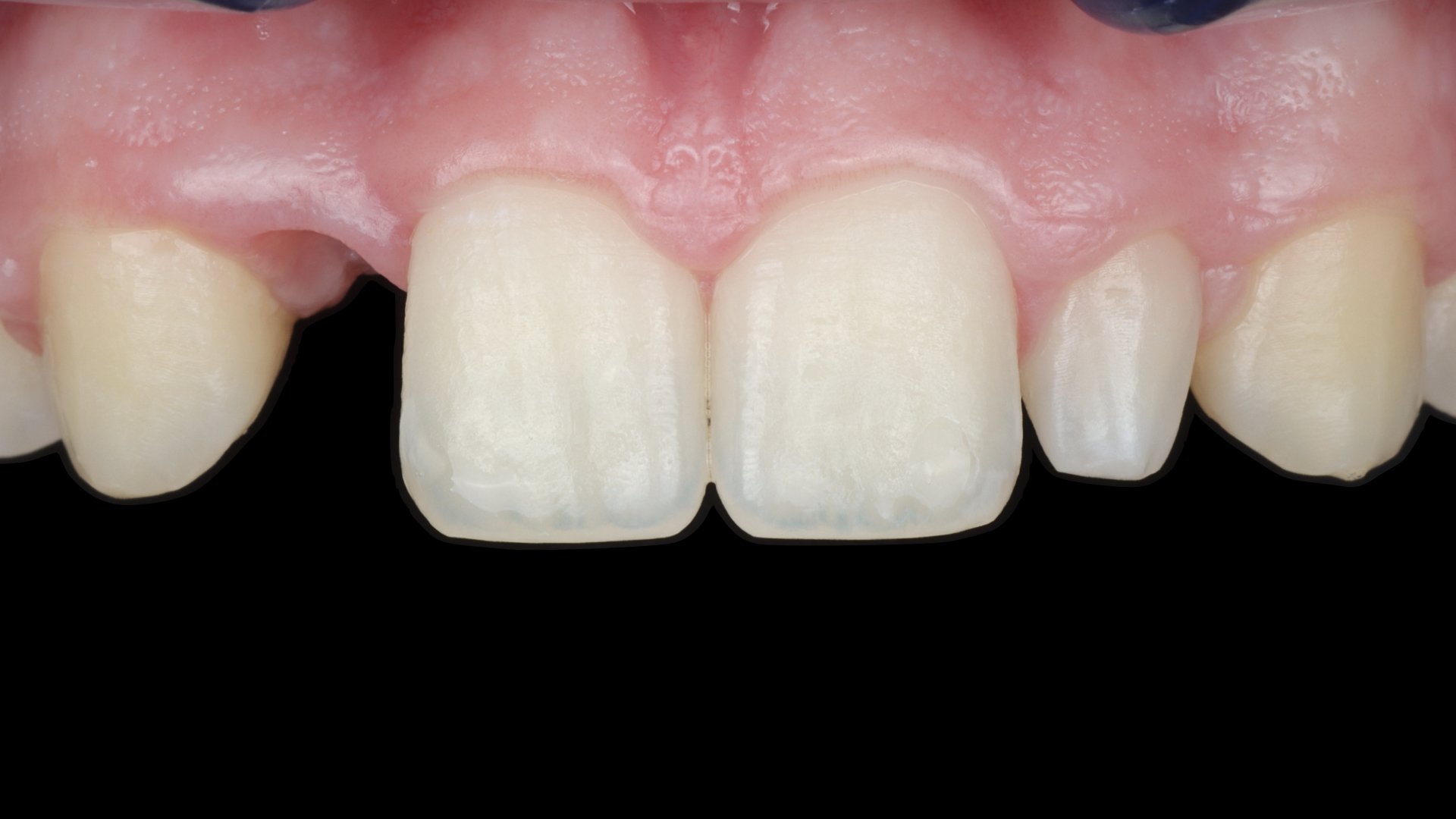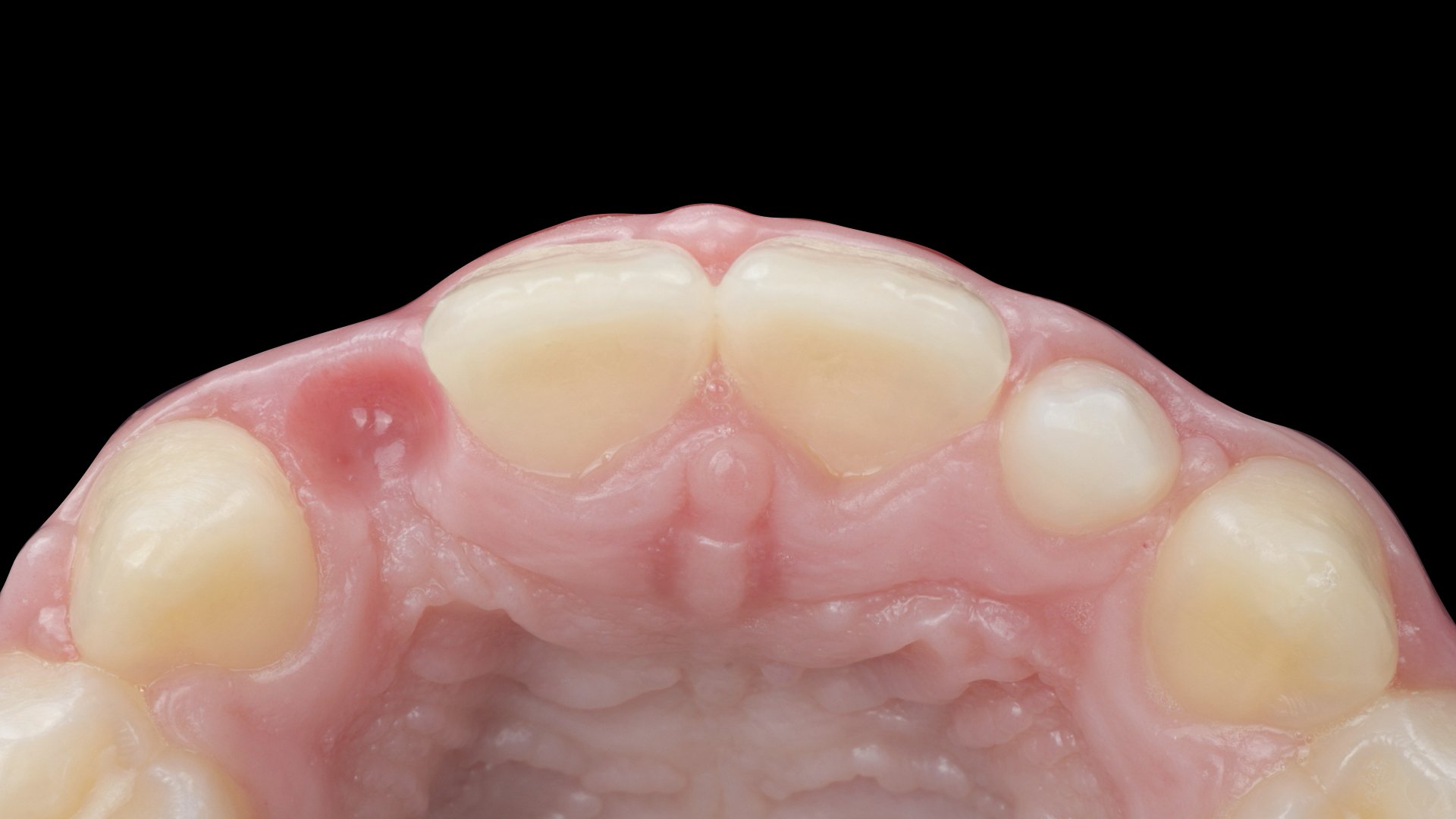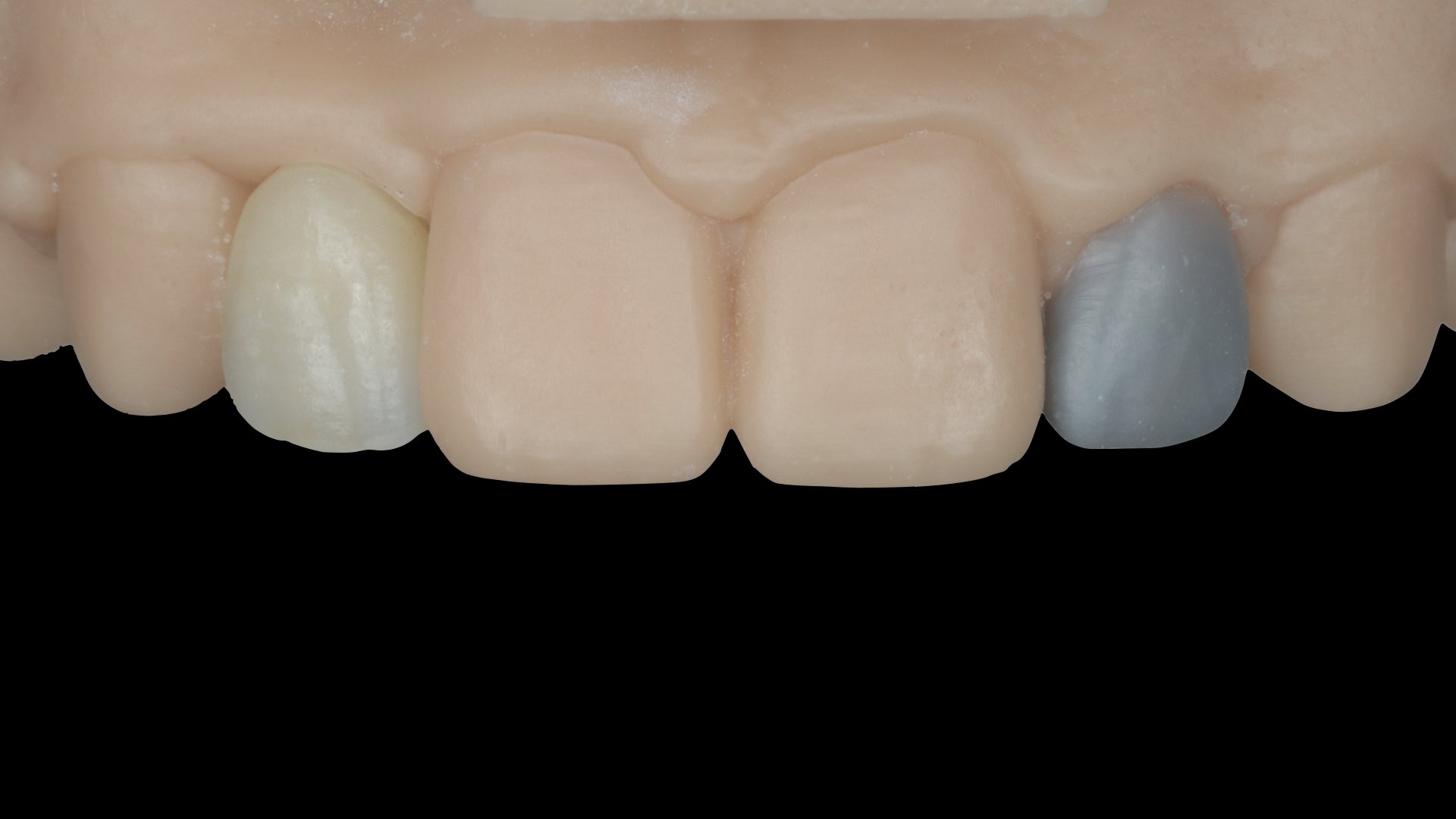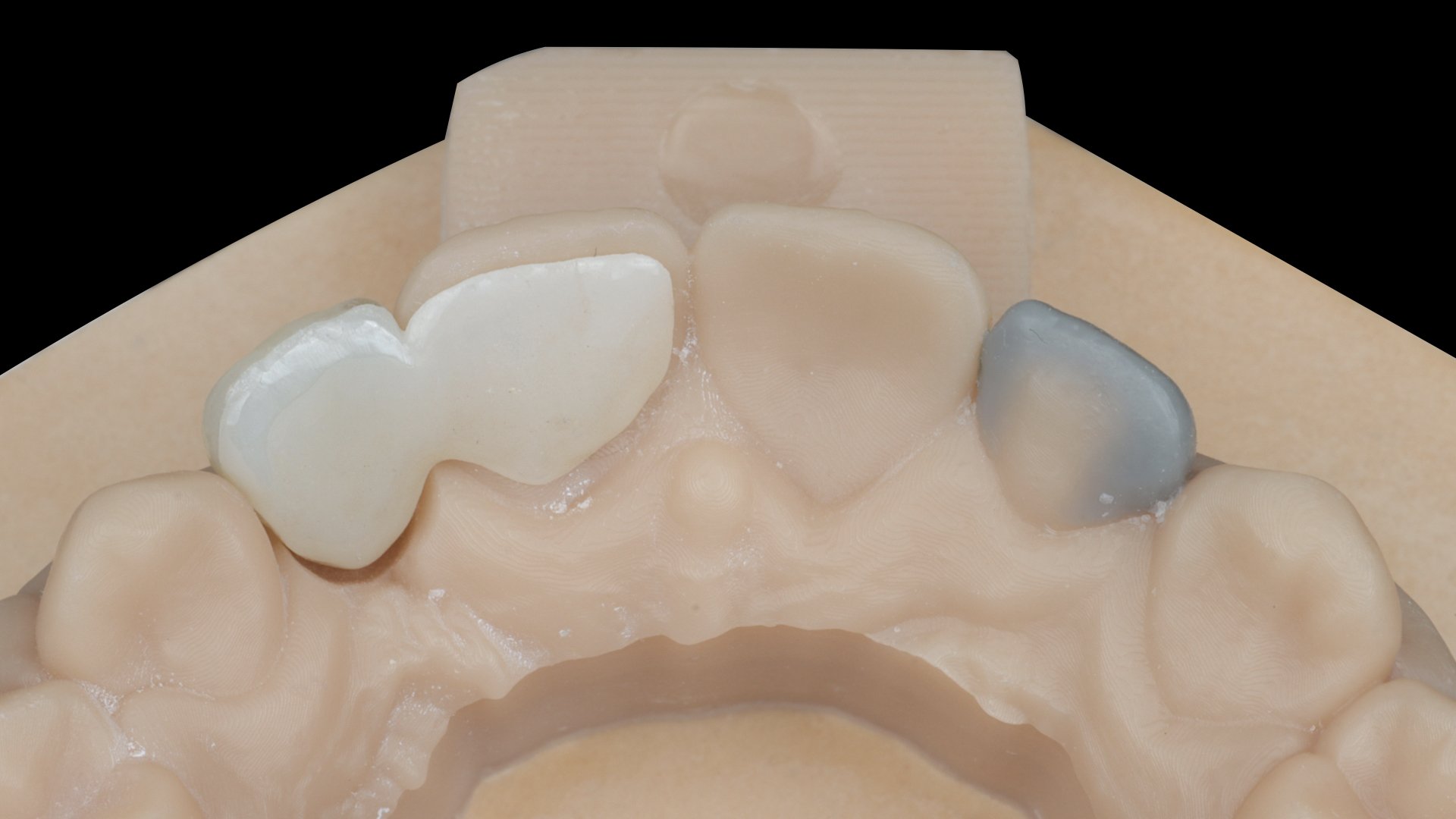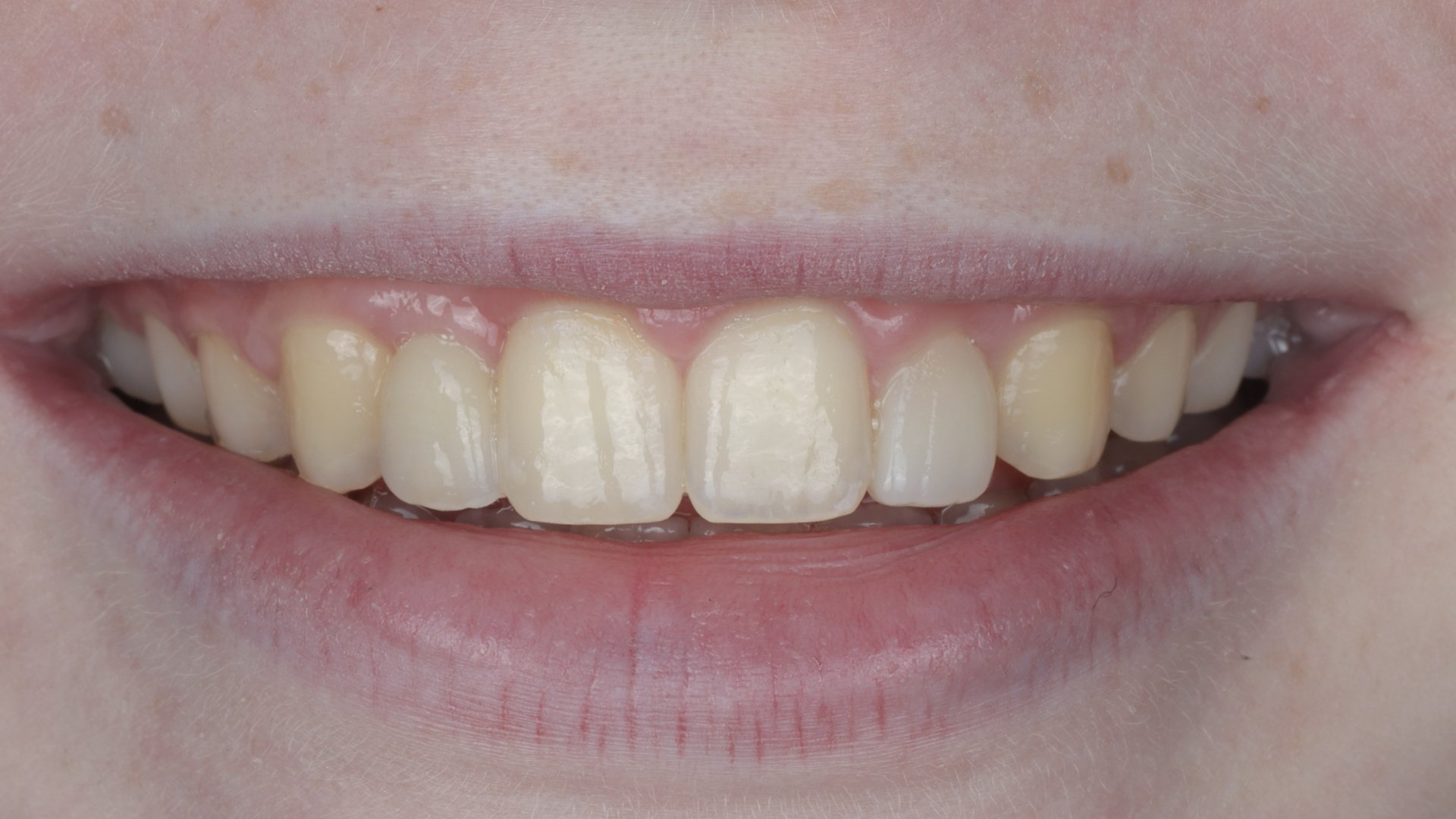Resin bonded bridges
Missing one or more permanent teeth is quite common and often the upper anterior teeth are involved. In these cases it’s often preferred that the orthodontist leaves the space of the missing tooth open, rather than trying to close the space. This will result in a more narrow upper arch which can introduce other problems.
When the orthodontist leaves the space of the missing tooth open a resin bonded bridge is usually the preferred treatment option to replace the missing tooth (semi) permanently. Another option is in implant, but it’s advised to place implants when you are fully grown (which is around the age of 23 for women and 25 for men). So when you’re younger the preferred option is a resin bonded bridge.
Smile photo
This smile photo was taken during the intake and is an essential photo for our treatment plan. The braces are still in place and the orthodontist asked me to check whether I have enough space for a resin bonded bridge.
Smile photo after orthodontics
The orthodontic treatment is finished and we can proceed with the resin bonded bridge. Note that the other tooth is a peg lateral (a smaller tooth) which needs some composite bonding to restore the shape of this tooth.
Close-up photo
A close-up photo of the anterior teeth in the upper jaw.
Occlusal photo
This photo shows the missing tooth and the smaller lateral incisor on the other side.
Essix retainer
Since one tooth is missing, it’s difficult to place a wired retainer behind the teeth. The wired retainer would also hinder any treatments that I need to do. Therefore the orthodontist often makes an essix retainer (clear retainer) to maintain the tooth position.
Sculpting the gums
By adding a little bit of composite in this essix retainer we can sculpt the gums to create a dent. This will result in a more natural looking resin bonded bridge, because it looks like the resin bonded bridge will emerge out of the gums.
Sculpting the gums
After six weeks of applying pressure with the essix retainer we can see a nice dent in the gums which creates a more natural situation for a resin bonded bridge.
Occlusal view
On the occlusal view you can see the dent. You can see that the shape is similar to the other (smaller) incisor.
Lab work
After six weeks an impression and/or scan from the situation is taken, and the dental technician can create the resin bonded bridge. In this case they also made a wax-up of the smaller incisor, so I could restore that with some composite.
Resin bonded bridge
A resin bonded bridge often has one wing. This wing is used to bond the resin bonded bridge to the adjacent tooth. This will create enough strength and stability for the resin bonded bridge to stay in place.
Evaluation after two weeks
After cementation of the resin bonded bridge and the build-up of the peg lateral the patient is seen for a 20-minute follow-up appointment.
Close-up photo
The resin bonded bridge seems to emerge out of the gums and this makes for a natural looking tooth. A resin bonded bridge is often a semi-permanent solution and might need replacement over time.
Please note: the results of this treatment may vary from patient to patient. Your own treatment may differ from what’s prescribed here. During the intake we will discuss different treatment options and discuss what’s best for you and what you can expect.
